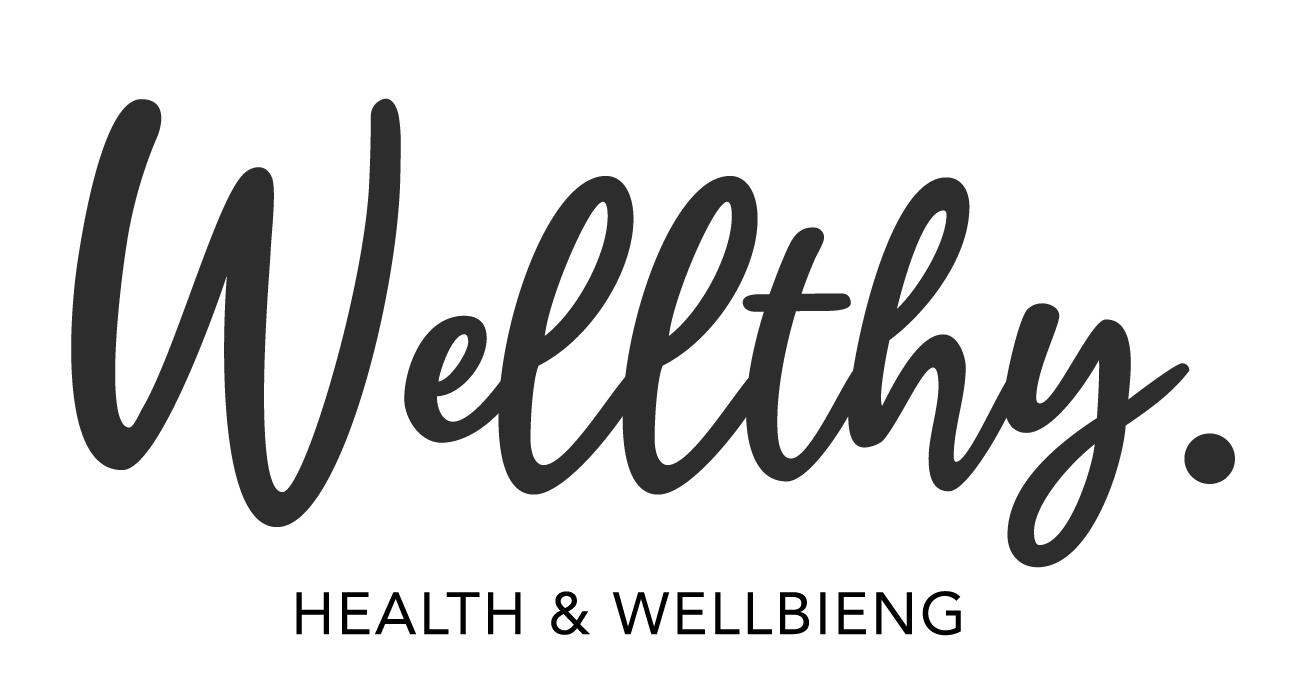Preventive health care strategies are the cornerstone of sustainable healthcare delivery, especially for healthcare professionals in busy clinics who strive to prioritize proactive wellness initiatives amidst a demanding environment. As the demand for quality care intensifies, the significance of implementing effective preventive measures becomes increasingly evident. In this blog post, we delve into the essential strategies for preventive health care tailored to the unique challenges faced by healthcare professionals in busy clinic settings. From optimizing time management to leveraging technology, let's explore how clinics can enhance patient outcomes and operational efficiency through preventive care initiatives.
Importance of Preventive Health Care in Busy Clinics
Understanding the Benefits of Preventive Health CareIn busy clinic settings, implementing preventive health care strategies is crucial for healthcare professionals to promote overall wellness among their patients. By focusing on preventive measures, healthcare professionals can address health issues proactively, leading to improved patient outcomes and reduced healthcare costs in the long run.
Cost and Time Savings with Proactive MeasuresOne of the key advantages of preventive health care strategies for healthcare professionals in busy clinics is the potential cost and time savings. By investing time and resources in preventive care, clinics can reduce the need for expensive treatments for advanced health conditions. Moreover, proactive measures can help clinics operate more efficiently, reducing the burden of handling emergency cases.
Improving Patient Outcomes through Preventive StrategiesPreventive health care not only benefits clinics but also enhances the well-being of patients. By emphasizing preventive measures, healthcare professionals can identify health risks early, provide timely interventions, and empower patients to take charge of their health. This proactive approach can lead to better patient outcomes, increased patient satisfaction, and a healthier community overall.
Key Takeaways:
-
Implementing preventive health care strategies can lead to long-term cost savings and improved clinic efficiency.
-
Prioritizing preventive care enhances patient outcomes and fosters a proactive approach to healthcare.
-
By focusing on prevention, healthcare professionals in busy clinics can create a culture of wellness and empower patients to lead healthier lives.
For further insights on the benefits of preventive health care, you can explore the resources provided by the Centers for Disease Control and Prevention.
Implementing Preventive Health Care Protocols
Designing Tailored Preventive Care Plans for Each PatientCreating customized preventive care plans for patients in busy clinics is essential to address their specific health needs and risk factors. By conducting thorough assessments and considering individual health histories, healthcare professionals can develop personalized plans that prioritize preventive measures tailored to each patient's circumstances.
Incorporating Regular Health Screenings and AssessmentsRegular health screenings and assessments play a vital role in preventive health care strategies for healthcare professionals in busy clinics. By scheduling routine screenings for conditions such as hypertension, diabetes, and cancer, clinics can detect health issues early and intervene promptly. Utilizing screenings ensures proactive management of potential health risks and enables timely interventions to prevent the progression of illnesses.
Educating Patients on Preventive Measures and Self-CarePatient education is key to the success of preventive health care strategies in busy clinic settings. Healthcare professionals should dedicate time to educate patients on the importance of preventive measures, lifestyle modifications, and self-care practices. Empowering patients with knowledge enables them to make informed decisions about their health and encourages proactive participation in their well-being.
Key Takeaways:
-
Tailored preventive care plans enhance patient outcomes by addressing individual health needs.
-
Regular health screenings help detect conditions early and enable prompt interventions.
-
Patient education on preventive measures promotes health literacy and encourages proactive self-care practices.
For additional resources on patient education in preventive health care, you can explore the educational materials provided by the Mayo Clinic.
Leveraging Technology for Efficient Preventive Care
Utilizing Electronic Health Records for Tracking Patient Health DataModern technology offers healthcare professionals in busy clinics the advantage of electronic health records (EHRs) for efficiently managing and tracking patient health data. EHRs enable seamless documentation, easy access to patient information, and real-time updates, facilitating comprehensive preventive care. By harnessing EHR systems, clinics can streamline workflows, enhance data accuracy, and improve care coordination among healthcare teams.
Implementing Telehealth Services for Remote MonitoringTelehealth services play a crucial role in preventive health care strategies for healthcare professionals in busy clinics, especially in remote monitoring and managing patients' health remotely. Telehealth platforms allow for virtual consultations, remote monitoring of vital signs, and ongoing communication with patients outside clinic visits. By leveraging telehealth technology, clinics can extend their reach, provide continuous care, and ensure timely interventions for patients, regardless of their physical location.
Integrating Health Apps for Patient Engagement and ComplianceIncorporating health apps into preventive care strategies enhances patient engagement, promotes self-monitoring, and improves treatment adherence. Health apps offer features such as medication reminders, activity tracking, and dietary monitoring, empowering patients to take an active role in their health management. By recommending and integrating relevant health apps, healthcare professionals can boost patient motivation, facilitate behavior change, and support long-term wellness goals.
Key Takeaways:
-
Electronic health records streamline patient data management and care coordination in busy clinics.
-
Telehealth services enable remote monitoring and virtual care delivery for proactive health management.
-
Health apps enhance patient engagement, self-monitoring, and treatment compliance in preventive care strategies.
For further insights on leveraging technology in preventive care, you can explore the digital health solutions offered by Apple Health.
Enhancing Staff Training and Collaboration
Providing Ongoing Education on Preventive Health PracticesContinuous staff training on preventive health practices is essential for healthcare professionals in busy clinics to stay updated on the latest guidelines and strategies. By investing in ongoing education, clinics can empower their staff with the knowledge and skills necessary to deliver high-quality preventive care. Training sessions, workshops, and certification courses help healthcare professionals enhance their competencies and provide optimal care to patients.
Encouraging Interdisciplinary Collaboration for Comprehensive CareInterdisciplinary collaboration among healthcare professionals is vital in fostering comprehensive care and holistic approaches to preventive health. Encouraging teamwork and communication among different healthcare disciplines, such as physicians, nurses, and therapists, enables a synergistic approach to patient care. Collaborative efforts allow for a multidimensional assessment of patient needs and the development of integrated preventive care plans tailored to individual requirements.
Empowering Staff to Promote Preventive Care InitiativesEmpowering staff members to take an active role in promoting preventive care initiatives within the clinic contributes to a culture of wellness and proactive health management. Healthcare professionals should be encouraged to engage with patients, advocate for preventive measures, and support patients in making informed decisions about their health. By fostering a team-based approach to preventive care, clinics can enhance staff engagement, boost patient satisfaction, and achieve better health outcomes.
Key Takeaways:
-
Ongoing staff education enhances the quality of preventive care provided in busy clinics.
-
Interdisciplinary collaboration fosters comprehensive and patient-centered preventive health approaches.
-
Empowering staff to promote preventive care initiatives creates a culture of wellness and patient engagement.
For additional insights on staff training and collaboration in healthcare settings, you can explore the training resources offered by Johnson & Johnson Institute.
Overcoming Challenges in Implementing Preventive Health Care
Addressing Time Constraints in Busy Clinic SettingsOne of the primary challenges healthcare professionals face in implementing preventive health care strategies in busy clinics is time constraints. The demanding nature of clinic schedules and patient volumes can make it challenging to allocate sufficient time for preventive care activities. Healthcare professionals need to find efficient ways to integrate preventive measures into their daily routines without compromising the quality of care provided.
Dealing with Patient Compliance and Adherence IssuesPatient compliance and adherence to preventive health recommendations pose another hurdle in busy clinic settings. Ensuring that patients follow through with preventive screenings, lifestyle modifications, and treatment plans can be challenging. Healthcare professionals need to employ effective communication strategies, patient education initiatives, and continuous support to enhance patient engagement and improve compliance rates.
Scaling Preventive Care Strategies for a Growing Patient LoadAs clinics experience growth and an increasing patient load, scaling preventive care strategies becomes crucial yet complex. Healthcare professionals must develop scalable approaches that can accommodate the rising demand for preventive services without compromising individualized care. Adopting technology solutions, optimizing workflows, and fostering a culture of prevention within the clinic can aid in effectively scaling preventive health care initiatives.
Key Takeaways:
-
Time constraints require healthcare professionals to find efficient ways to incorporate preventive care.
-
Patient compliance challenges necessitate effective communication and support strategies for improved adherence.
-
Scaling preventive care strategies involves developing scalable approaches to accommodate growing patient loads.
For insights on overcoming challenges in preventive health care, healthcare professionals can explore the resources provided by the American Hospital Association.
Measuring Success and Continued Improvement
Establishing Key Performance Indicators for Preventive Care ProgramsIdentifying and establishing key performance indicators (KPIs) is essential for measuring the success of preventive health care programs in busy clinics. KPIs provide measurable benchmarks that allow healthcare professionals to track the effectiveness of their preventive care initiatives. Metrics such as patient adherence rates, screening completion rates, and patient outcomes can serve as KPIs to assess the impact of preventive strategies on patient health and clinic efficiency.
Analyzing Data to Identify Areas for ImprovementData analysis plays a crucial role in evaluating the performance of preventive health care strategies and identifying areas for improvement. By analyzing the data collected from screenings, patient interactions, and outcomes, clinics can gain valuable insights into the effectiveness of their preventive care programs. Data-driven decision-making enables healthcare professionals to identify trends, challenges, and opportunities for enhancing preventive care delivery.
Implementing Feedback Loops for Continuous Quality EnhancementEstablishing feedback loops within the clinic environment facilitates continuous quality enhancement of preventive health care services. Encouraging feedback from both patients and staff members allows clinics to gather insights on the strengths and weaknesses of their preventive care programs. By soliciting feedback, clinics can adapt their approaches, address concerns, and implement enhancements to optimize the delivery of preventive care services.
Key Takeaways:
-
Key performance indicators are essential for measuring the success of preventive health care programs in busy clinics.
-
Data analysis provides valuable insights for evaluating the effectiveness of preventive strategies and identifying areas for improvement.
-
Feedback loops enable continuous quality enhancement of preventive care services through patient and staff input.
For additional guidance on measuring success and improvement in preventive health care programs, healthcare professionals can refer to the resources provided by the World Health Organization.
FAQs on Preventive Health Care Strategies for Healthcare Professionals in Busy Clinics
Q: How can healthcare professionals balance the demands of a busy clinic while prioritizing preventive health care?A: Healthcare professionals can optimize their workflows by scheduling dedicated time slots for preventive care activities, delegating tasks efficiently, and utilizing technology solutions for streamlined processes.
Q: What are some effective ways to educate patients on preventive health measures during clinic visits?A: Patient education can be enhanced through the use of visual aids, personalized health plans, and interactive discussions to ensure clear understanding and engagement in preventive care practices.
Q: How can clinics address the challenge of patient compliance with preventive health recommendations?A: Building strong patient-provider relationships, offering ongoing support, and implementing reminder systems can aid in improving patient compliance and adherence to preventive health measures.
Q: What role does staff training play in the successful implementation of preventive health care strategies in busy clinics?A: Ongoing staff training fosters professional development, ensures alignment with best practices, and empowers healthcare professionals to deliver high-quality preventive care to patients.
Q: How can clinics measure the effectiveness of their preventive health care programs and drive continuous improvement?A: By establishing key performance indicators, analyzing patient data, implementing feedback mechanisms, and conducting regular assessments, clinics can gauge the impact of their preventive care initiatives and identify areas for enhancement.


